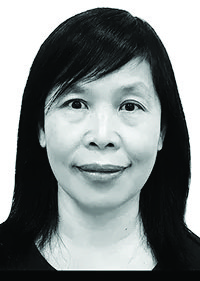What do/can we learn from through frequent slip fault downhole optical fiber-Taiwan Milun fault Drilling and All-inclusive Sensing (MiDAS) project

Dr. Kuo-Fong Ma
Distinguished Research Fellow – Institute of Earth Sciences, Academia Sinica, Taiwan
Host: Dr. Matthew Weingarten and Ruei-Jiun Hung
Wednesday, November 16, 2022
1 pm – CSL 422
watch Kuo-Fong’s talk
Abstract
The Milun fault Drilling and All-inclusive Sensing (MiDAS) project carries out a drilling into a recent ruptured active fault, and setup a cross-fault zone observatory using various state-of-the-art sensors to build up a long-term monitoring with close-in data for the direct observation on earthquake nucleation, precursors, and the association of fault system to the possible subduction zone mega-earthquake through years. We deployed a 3D horizontally and vertically crossing active fault (~ 530m) optical fiber (downhole OF_A, 700m deep) to a recent ruptured fault, where high seismicity was observed from its location close to the Ryukyu subduction zone system under the MiDAS (Milun fault Drilling and All-inclusive Sensing) project. The dimension of this 3D optical fiber array is in total of about 5km long within a loop with Distributed Acoustic Sensing, DAS/ Distributed Temperature Sensing, DTS system for seismicity and temperature monitoring along together with a hole-C for hydrological observatory. With the retrieved core associated with the fault gouge, and geophysical logs, the amplification of seismic wave associated with fault zone structure were clearly evidenced. The fault zone is very local and narrow in scale of few meters. The identification of the fault zone through downhole geophysical observation is made possible only because of the development of this emerging fiber-optic technologies, which has scale spatial resolutiontens of meters. We show the fine fault zone, and subsurface structure mapped from this high spatial resolution optical fiber array for its amplification in amplitude and change in frequency content. We also apply the source deconvolution using the aftershock as an Empirical Green’s function from recent moderate earthquakes (M6+) to explore the slip heterogeneity. We show that the downhole optical fiber array could provide detail mapping to provide the hints on fault roughness, and their possible implication to the generation of high frequency. We demonstrated the application of meter scale spatial resolution of in-situ downhole optical fiber could be beneficial to map the fault architecture for known and unknown faults, and good capability to decipher the slip heterogeneity of regional fault system.

